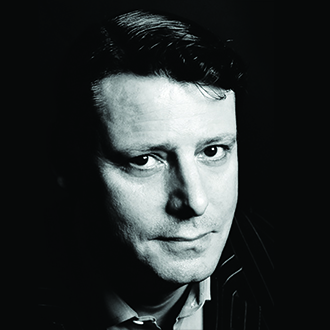There will be many places to find a wonderful display of lights in our area this holiday season, from the “Holiday Lights” show at the Bronx Zoo, to “The New Westchester’s Winter Wonderland Drive-Thru Extravaganza” at Kensico Dam Plaza in Valhalla to Hartford’s “Holiday Light Fantasia” in the city’s Goodwin Park – with myriad private homes and public spaces dramatically illuminated between.
Lights are also Covid-friendly, or at least pose no specific Covid-threat, especially as many of the best shows can be enjoyed from the safety, to say nothing of the warmth, of the family car. The one bright spark, so to speak, in an otherwise damped down holiday season this year, may well be the physical luminescence wherever we turn.
But soon enough December will be catapulting us into fully-fledged winter, and then it will be time to reconsider another kind of light – natural light. Because, as we all wait anxiously for the vaunted vaccine, from whichever source it might come, this is going to be the winter of the great outdoors. Throw away your ugly SAD boxes and your vials of vitamin D and take the mink or the faux-fur out of mothballs instead. Here come months of restaurant terraces under patio heaters, of windows flung wide open, of wraparound Ray-Bans at the ready as sunbeams, reflected off of snow perhaps, blind you with their wintry light.
While we tend to put up with winter, which in normal times we might alleviate with a skiing trip or a hop down to Florida, coupled with the hope of an early spring, Scandinavians tend to embrace it. No SAD for them, no counting the days until the vernal equinox in March, no Netflix ad nauseam. No, they’re sitting pretty, wrapped in their sealskins through the long northern winter, looking into each other’s eyes over flickering candles, and saying “Skal.” Winter? Bring it on.
The fact that hygge is no-longer red-flagged by spell-check tells you something. I first discovered hygge, the Scandinavian concept of cozy conviviality, with the power to brightening the short winter days and long nights, on a trip to Denmark way back in the 1990s. In the first hotel we stayed in, on Denmark’s Jutland coast, the number of candles could have powered a small country. By contrast, a year later, driving at night through what was then still Czechoslovakia, I have never forgotten the bleakness of the villages we glided stealthily through, each house or apartment lit by a single, 40-watt bulb, the maximum a Czech household was then permitted to burn at one time. There was such a desperation, such a melancholy to that lack of light. It was the very antithesis of hygge.
The Abrahamic faiths all have festivals centered around light. For Christians, it was a star in the East which first heralded the Savior’s birth, and indeed it would be hard to separate Christmas from light. The Jewish festival of Hanukkah in part commemorates the miracle of how a single flask of oil, enough to light the Temple menorah, or candelabrum, for only one night, lasted the entire eight days necessary for the Temple’s rededication. In Islam, light is a sign of God’s presence, and during Eid al-Fitr, the festival that marks the end of Ramadan, Muslim homes are adorned with lights and decorations.
Light, too, is the central symbol of Diwali, observed by Hindus, Sikhs and Jains – the word “Diwali” itself coming from the Sanskrit for “row of lamps.” And doubtless Kwanzaa, the African-American festival celebrating faith, unity and collective work and responsibility, traditionally observed with the lighting of candles, will hold a special resonance this year in the wake of Black Lives Matter.
Thus, people of faith, and likewise people of none, take comfort in physical light, in whatever form it takes.
But there is, of course, another kind of light beyond the material. It is the light of actual enlightenment, the light of hope, the light that reveals truth and dissipates despair. Shakespeare encapsulated it and popped it on Portia’s lips in “The Merchant of Venice: “How far that little candle throws his beams / So shines a good deed in a naughty world.” And the common symbolism of light seems never to have had more actual, practical application than now.
Because if, on the one hand, we talk about hopelessness, gloom and even death, all of which have been manifest in this extraordinary year, we must talk equally about our shining lights – our healthcare workers, caregivers and armies of volunteers, from neighbors to restaurant owners, to kids giving up their time and compromising their own safety to spread a little light. The light spread by altruism, after all, is a proven cure for depression and we all know that it is better to light a candle than sit in a blackened room and curse the darkness.
They say it’s darkest before the dawn. As we head into the new year, with its promise of an effective Covid-19 vaccine and the prospect of deep political change, it already feels – at least to a cockeyed optimist like me – that we are slowly leaving the recent darkness behind and heading into the light.





